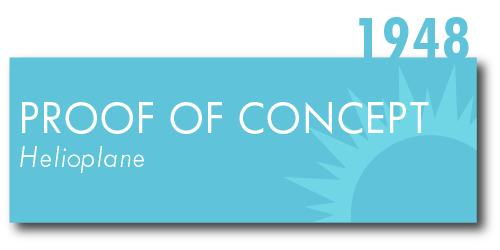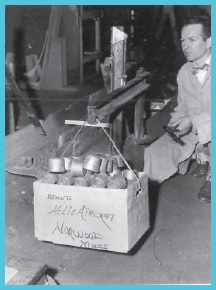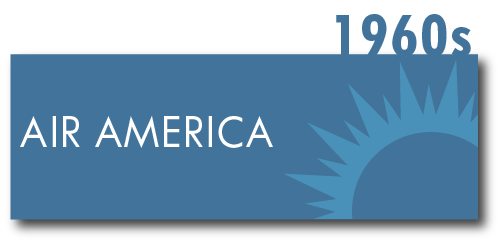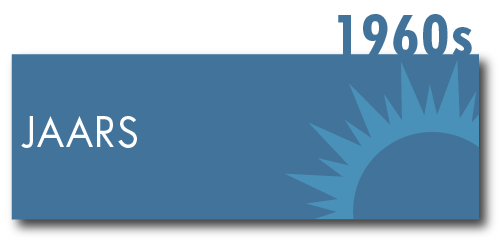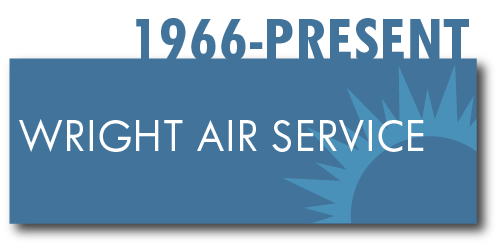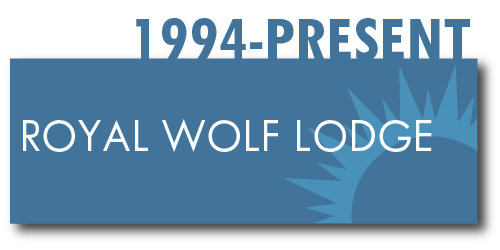
Highly prized today as a backcountry aircraft, the Helio Courier’s history is rooted in the desire to create a STOL airplane with utility and substantial margins of safety. The legacy of the Courier has been powered by the aviators who continued to fly and innovate the aircraft over the decades. Almost three-quarters of a century later, the Helio Courier continues to deliver uncommon performance and uncompromising utility.
“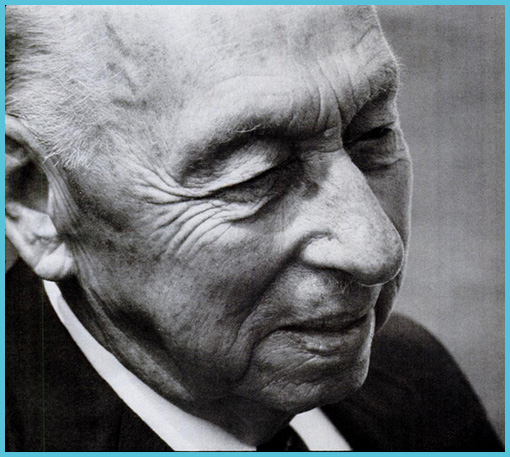
Dr. Otto Koppen, an MIT Professor of Aeronautics, designs the Helioplane as a proof of concept for a safe STOL airplane. ”
“Helio Aircraft Corporation is formed.
Dr. Koppen applies for the patent of the High-Lift Airplane.”
“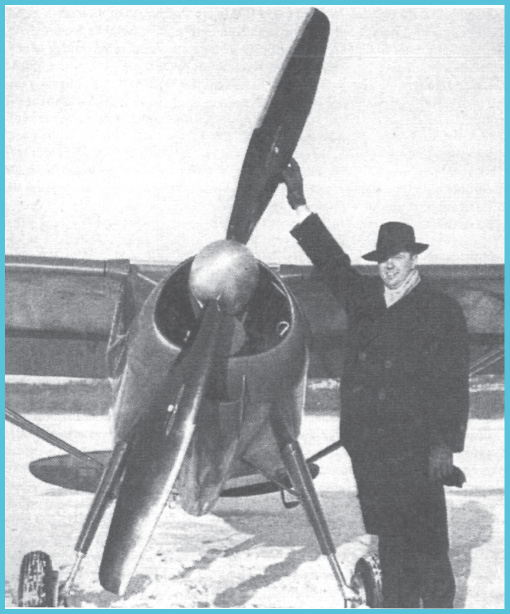
Lynn Bollinger, a Harvard Professor of Business, defined the criteria for the ideal STOL airplane. Pictured with the 9-foot propellor of the Helioplane.”
“The Helioplane was demonstrated taking off from a tennis court at Harvard University and prior to the 30-yard line at the MIT athletic field.”
KEY FEATURES OF THE HELIOPLANE
A proof of concept aircraft which was built off of a modified Piper Vagabond
Continental C-85
Leading edge slats
Full-length flaperons
9-foot propellor
Reduction drive system between the engine and the propellor
“
The prototype Helioplane-Four was built and tested. It was an improvement on the Helioplane.”
IMPROVEMENTS ON THE HELIOPLANE-FOUR
Fully cantilevered wings
Four-place seating
Continental C-145-4 engine
Length/span increases Shortened prop
Stabilator
Larger vertical tail fin/rudder
Passenger windows
More conventional flap and aileron configuration. Interceptors linked to aileron
“
The pre-production prototype for the model H-391A was built and tested. Photo: Kramer Morgan Collection, 1000aircraftphotos.com”
“The final configuration of the production model was determined and was marketed with the name familiar to this day, the Helio Courier.”
Photo diagram of the H-391 Courier takeoff.
KEY FEATURES OF THE HELIO COURIER MODEL H-391
Aerodynamically improved cowling
Geared Lycoming GO-435 providing 260 HP
101” Hartzell 2-blade propeller
Overall dimensions slightly increased
Aluminum tail cone (models H-391B and onward)
Approved configurations for use on floats, wheels and skis
4-place seating standard (with a 5th seat later optional)
“Patent approved for the High-Lift Airplane.”
“
Helio applied for certification of the H-391B with the CAA in 1951. In 1953, Helio was issued a Type Certificate 1A8.”
“
Certification testing to show compliance with the CAA regulations.”
STATIC TESTING FOR CERTIFICATION REQUIREMENTS
Testing the wing, flap, aileron and slats for certification requirements
Static testing of the landing gear and drop tests of the main landing gear assembly.
Testing the tail cone and tail landing gear.
“”
Draftsmen working on drawing revisions.





“”
“The first certified Helio Courier is produced, registration number N242B, as model H-391B. It is still in-service today.”
A Helio Courier in the final stages of production.




“”
KEY FEATURES OF THE HELIO COURIER MODEL H-395
Marketed as the Super Courier, with increased performance
Lycoming GO-480 providing 295 HP
96” Hartzell 3-blade propeller
Gross Weight increased to 3000lbs (3800lbs later allowable by STC)
5-place seating standard
“The L-28 STOL aircraft is one of the most versatile in the Air Force Inventory. It combines unusual short takeoff and landing performance with rugged construction and operational dependability. In addition to its short field capability, the L-28 can cruise at relatively high speeds with good fuel economy. Safety is an outstanding feature of this aircraft. Since it is possible to land the L-28 in extremely small spaces, the number of suitable forced landing fields is greatly increased. This, coupled with a power-off rate of descent less than that of a parachute, also contributes to crew safety…”
–Air Force analysis of the L-28 (military version of the Helio Courier Model 395)





“”
KEY FEATURES OF THE HELIO COURIER MODEL H-395A
Lycoming GO-435 providing 260 HP
101” Hartzell 2-blade propeller
Gross Weight increased to 3000lbs
5-place seating standard
“
The Helio Courier catches the eye of the US military and Air America, an American airline covertly operated by the CIA for operations in the Vietnam War.”
“Based on the Air Force’s L-28 fleet ordered in the 1950s, the Air Force orders additional Super Couriers. Ultimately designated as the U-10, these planes flew in Vietnam as part of the 5th Air Commando Squadron.”
“
Jungle Aviation And Radio Service (JAARS) founded in 1948, provides air transportation support and radio communications for missionaries working in the Amazon jungle of South America, as well as other indigenous regions across the world. JAARS has been flying Helios since 1955, at one point having more than 25 Helios in active service in 8 countries around the world. Source: JAARS”
HELIO COURIER INNOVATIONS COMPLETED BY JAARS
Gross Weight increased to 3800lbs
Landing gear reinforced
S-Frame seats improve crashworthiness
Belly-pod increases cargo volume
Various minor structural improvements more conducive to off-airport abuse
“”
KEY FEATURES OF THE HELIO COURIER MODEL H-250
Marketed as the Mark II Courier, a more economical option
Direct drive Lycoming O-540 providing 250 HP
88” Hartzell 2-blade propeller
Gross Weight increased to 3400lbs
6-place seating standard with added full 3rd row side-by-side
“
Wright Air Taxi based in Fairbanks, Alaska adds their first Helio Courier to their fleet in the 1970s for short fields and game surveys. At their height of operations, they had 7 Helio Couriers in their fleet.”
““C/STOL” is trademarked by the Helio Aircraft Corporation.”
“”
KEY FEATURES OF THE HELIO COURIER MODEL H-295
Continuation of the Super Courier line from the H-395
Lycoming GO-480 providing 295 HP
96” Hartzell 3-blade propeller
Gross Weight increased to 3400lbs (3800lbs later allowable by STC)
6-place seating standard with added full 3rd row side-by-side
PIONEERS IN AVIATION - AL WRIGHT
Veteran pilot and founder of Wright Air, Al Wright has 70 years of commercial flying experience. He became familiar with the Helio Courier in the mid-1960s after reading an article about them. He proceeded to hire a pilot who had flown Helio Couriers during the Vietnam war. In 1966, he traded in his Cessna 180 for an H-250 from the Helio factory in Kansas. Bob Bursiel (another veteran Alaskan aviator) flew the Courier back up to Alaska. Wright fell in love with the Helio Courier for its easy-to-load large back door that is flush with the floor and the robust landing gear. The landing gear has oleo shocks which absorb landing on rough terrain very well. The Helio Courier quickly became his go-to aircraft for taking hunters, prospectors, rafters and so on out into uncharted lands. Source: Al Wright
“”
KEY FEATURES OF THE HELIO COURIER MODEL HT-295
Tricycle gear version of the H-295
The only non-tailwheel Courier model produced from the factory
Some earlier tailwheel H-295’s were also converted to nose gear by STC
Lycoming GO-480 providing 295 HP
96” Hartzell 3-blade propeller
“Production is paused. New management takes over as Helio Aircraft LTD. ”
PATROLLING THE TRANS-ALASKA PIPELINE
The Trans-Alaska Pipeline construction project proved to be pivotal to the growth of Helio Couriers in the air in Alaska. Initially, Wright was hired to fly men and equipment to different construction sites in the bush. After the pipeline was finished, Wright Air was contracted to survey the entire pipeline...daily. In the morning a pilot would take a Courier from Fairbanks down to Valdez and back. Then a second pilot would take the same plane from Fairbanks to Prudhoe Bay and back. The Courier was outfitted with a camera so that pictures could be taken of any animals near the pipeline, anything that seemed suspect, or any people or vehicles along the right of way. The Courier's slow speed capability allowed pilots to fly very slowly but still safely when taking pictures. The reasonable cruise speed allowed them to complete this mission every day. If weather was bad, the Courier's off airport ability allowed the pilot to find a spot to land virtually anywhere and wait out the bad weather. According to Mr. Wright, they only missed 3 days of completing the survey in over 2 years.
“
When Talkeetna Air Taxi was under the ownership of Lowell Thomas Jr, a Courier on skis was his favorite for transporting adventurers to Denali and across the Alaska Range. The plane pictured is currently on display at the Alaska Aviation Museum in Anchorage, AK. ”
PIONEERS IN AVIATION - LOWELL THOMAS JR.
A lifelong adventurer and aviator, Lowell Thomas Jr. and his wife flew their 180 to Alaska in 1958 from the East Coast. In the subsequent years, Mr. Thomas became involved in Alaska politics, serving in the State Senate and later as lieutenant governor. After leaving politics, Mr. Thomas purchased Talkeetna Air Taxi in 1981. He flew climbers in and out of the Alaska Range in his ski-equipped Helio Courier. Thomas became a fixture in the mountaineering community as a reliable, highly skilled pilot with an incredible knowledge of the terrain. A passionate pilot, Thomas continued to fly well into his 80s before retiring his beloved Helio Courier and donating it for display at the Alaska Aviation Museum. Source: Thomas Family
“”
KEY FEATURES OF THE HELIO COURIER MODEL H-800
1st model from a brief 1980s production restart
Direct drive Lycoming IO-720 providing 400 HP
86” Hartzell 3-blade propeller
Minor aerodynamic and cowling changes
Different main landing gear design
New stainless steel wing carry-through structure for corrosion resistance
Gross Weight increased to 4000lbs
“”
KEY FEATURES OF THE HELIO COURIER MODEL H-700
2nd model from a brief 1980s production restart
Turbocharged Lycoming TIO-540 providing 350 HP
87” Hartzell 3-blade propeller
Same airframe updates, modifications, and differences as the H-800
Gross Weight increased to 3800lbs
“Helio Aircraft LTD. ceases operations.”
“
The Royal Wolf Lodge based in remote western Alaska uses Helio Couriers on floats to access world-class fishing grounds.”
“The Helio Courier is featured in the action feature film, Waterworld.”
“
Icefield Discovery uses Couriers to support mountaineers and scientists in Northern Canada. They currently operate 2 Couriers on skis. Source: Icefield Discovery”
“Helio Alaska, Inc. is formed”
“
Helio Alaska, Inc. acquires FAA certificate 1A8 for the Helio Courier. The small company is working to restart production of this incredible plane.”
“
Helio Alaska enters N62JA in the annual Valdez STOL competition. A combined take-off and landing distance of 197 feet was the shortest of any other certified category airplane.”
HELIOS IN THE AIR
Of the 120 Couriers currently registered in North America, 37 operate in Alaska and 21 in Canada.




